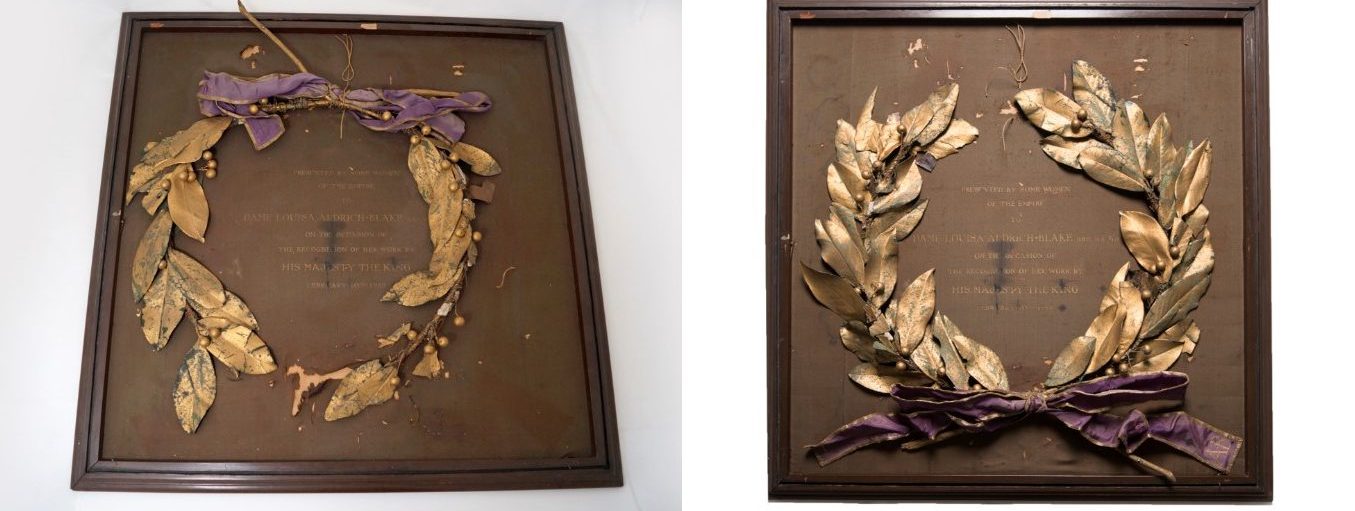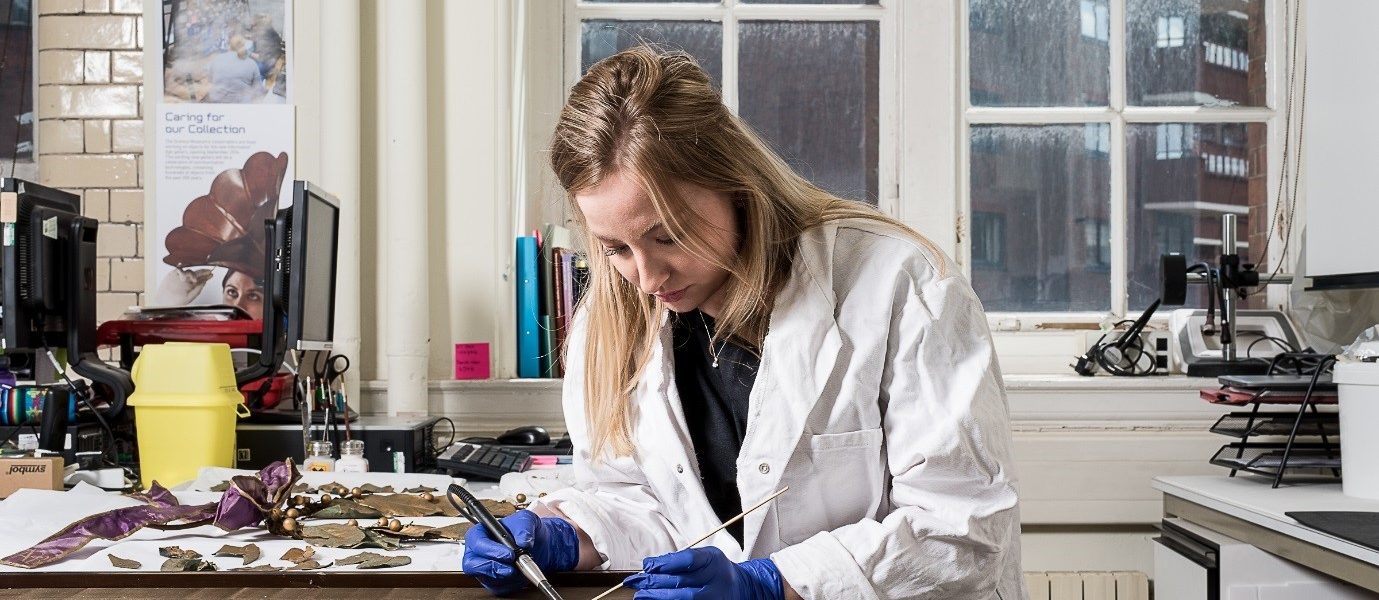At the Blythe House object store in west London, over 50 colleagues are working hard to study, record, digitise, pack and transport over 300,000 incredible items from the Science Museum Group Collection to their new home at the National Collections Centre in Wiltshire, which will open regularly to the public from 2023.
This blog series goes behind the scenes with the teams making this ambitious project happen.
This project has given us, the Science Museum conservators, a rare opportunity to treat objects that aren’t yet destined for display. As the project requires the packing and transport of our objects to their new home at the National Collections Centre, some especially vulnerable objects need conservation simply to survive the journey.
One of which is a plaque honouring the death of Dame Louisa Aldrich-Blake, presented by King George V in 1925. Aldrich-Blake was a pioneer within the medical profession and was one of the first-ever British female surgeons.
Much of her work focused on the treatment of cervical and rectal cancers. The plaque was made to commemorate her contribution to the war effort as a surgeon during the First World War.

The plaque consists of a wooden frame, with a gilded laurel leaf wreath comprising of branches and iron wire. The wreath was mounted on silk-covered wood with gilded lettering in the centre. It is in very poor condition due to its age.
The silk, leaves and metal components are particularly degraded and without treatment could become further damaged during transit. The plaque joined our collection in 1974 in this condition.
The artefact required the following conservation treatments:
- Consolidating the gilt surface on the leaves
- Cleaning the gilt layer
- Cleaning the textile
- Humidifying the textile
- Adhering and facing the textile to the board
The gilt was flaking off in numerous places because the leaves had dried and warped as they aged. As a result, the gold leaf was lifting away from the surface and was in danger of being dislodged and therefore required consolidation, the impregnation of resins to form new points of strength.
To achieve this, I fed a low concentration adhesive beneath the surface of the gold.

I was able to clean the newly reinforced gilded surface following the consolidation treatment. The leaves were cleaned using acetone and a cotton swab. This steady approach allowed for a very controlled cleaning of the gold.

Next, the silk backing required attention. After consulting textiles conservators, the surface was cleaned with a soft bristle brush and a museum vacuum cleaner to lift the obscuring layer of dust and dirt.
The textile had been torn by the wreath as it became detached from its mount and many of these areas now have stains that have hardened, warped and creased. I decided to humidify the silk to gently encourage it to flatten, which would prevent the material from snagging on packing materials.

To adhere the textile down I applied adhesive to strengthen and stabilise the textile. I made facing film by immersing Japanese tissue into a solution of toluene and dissolved BEVA film. I used this method to adhere the textile as these are easy to use, controllable and more importantly, easy to reverse in future. I applied this by sliding the Japanese tissue beneath the textile and reactivated the adhesive with a heated spatula.
The plaque has been arranged with leaves in place as they would have looked, these haven’t been adhered down. The eagle-eyed of you may have noticed that the wreath has been turned around 180 degrees during treatment. The backing textile has acidified and been stained from the original placement of the wreath so I am convinced that its current placement is the correct orientation.

As the plaque is not destined to be displayed anytime soon, a very interventive treatment is an unnecessary step and will cause extra stress to the corroded wire and the leaves.
The wreath has not been reattached to the backing to prevent further stresses and tearing to the textile and has now been carefully packed using bespoke methods, ready for its journey to the National Collections Centre.
